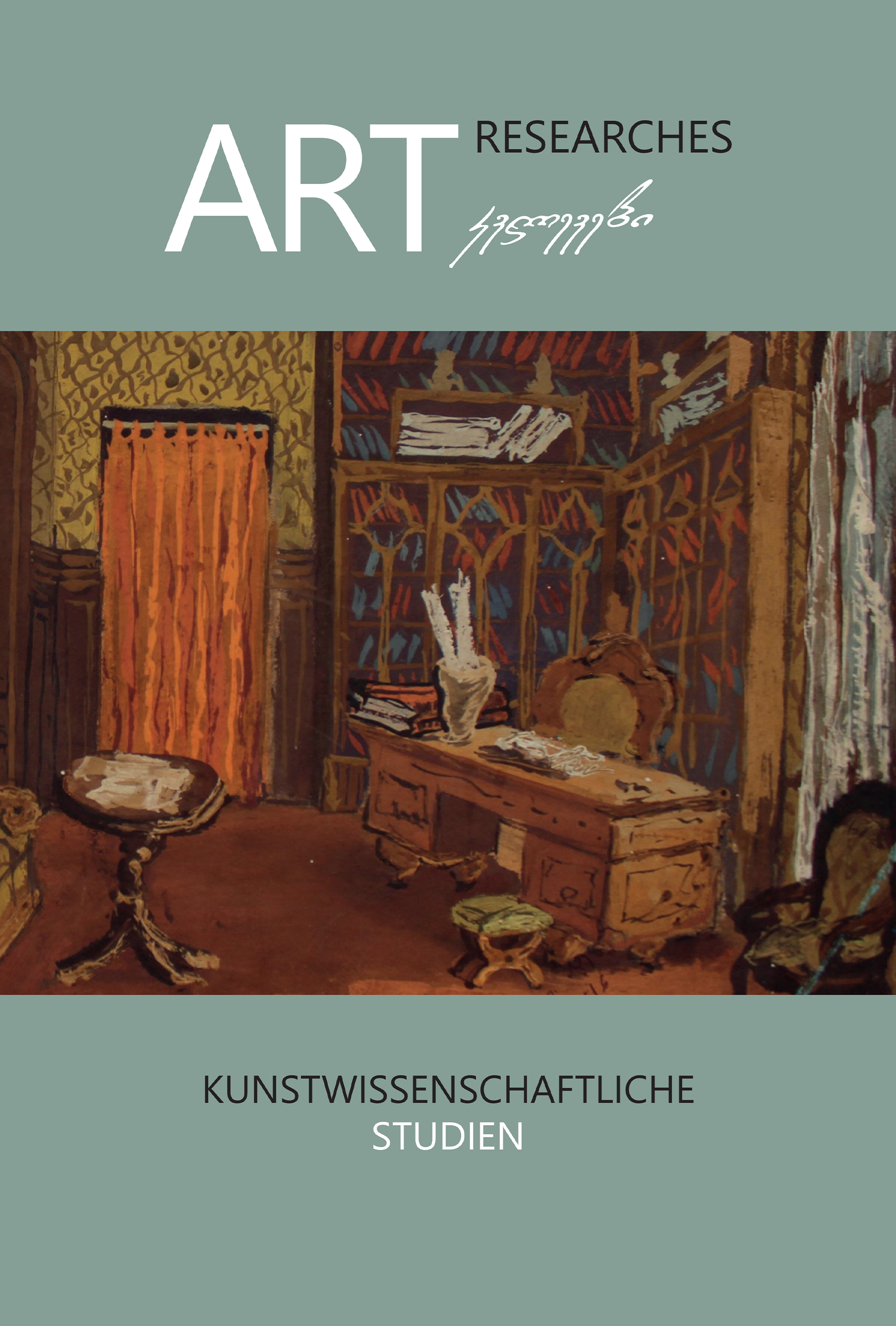სახვითი ხელოვნების ემოციურ-სახეობრივი სპეციფიკა
Main Article Content
ანოტაცია
The Renaissance period in European culture is the epoch of those changes in which the religious and intellectual played a major role. The humanism of the 14th-15th centuries and the dissemination of ancient texts became the basis of education and knowledge.
The creative range of the art world spreads and reaches a large scale.
In the 16th century, painters were particularly appreciated by patrons of the arts. The artists of the Renaissance wrote down their artistic and life events. Some of these texts have reached us. The writers of the time were interested in the work of contemporary artists. Giorgio Vasari was one of the first to publish “Le vite de’ più eccellenti pittori, scultori e architettori” - “Lives of the most outstanding painters, sculptors and architects” (known as “Le Vite” for short) in 1550.
This collection of biographies also contains critical assessments by the author. Vasari emphasizes the role of patrons/patrons of the arts and argues that art becomes much more beautiful and realistic over time, reaching the peak of perfection in the era of its contemporaries. It is precisely from this statement by Vasari that our conception of the High Renaissance stems, which (since the early experiments of Giovanni Cimabue and Giotto) is based on the harmonious synthesis of the realistic representation of classical ideals and the visible world.
Renaissance painters freed themselves from the Church’s scholastic conception of the world order and became interested in depicting the real world. The basic ideas of the visual arts are now treated from the perspective of scientific thought. The ideas of art seen from the perspective of science show the meaning of this close interaction. The ancient ideals, the knowledge of the anatomical representation of the “object” is the most important thing for the creators of the Renaissance. Theoretical foundations were laid for the teaching of painting and painting, and a common tendency in the artistic theories of the Renaissance epoch became recognizable. Leon Battista Alberti wrote to Filippo Brunelleschi: “The old masters, unlike us, could turn to a number of contemporary examples for the purpose of teaching, but we... create works of art without “invisible” examples”.
The painters of the Renaissance saw the progress of art in the scientific way of thinking. They even considered it a duty to share scientific thinking with others. Filippo Brunelleschi even gave passionate lectures on perspective in the town square (in an open space).
The attitude of Renaissance painters to the fundamentals of the visual arts is special. Michelangelo wrote: “The image, which is called the art of sketching, is the culmination of both painting and sculpture. The image - the line of the image is the foundation of all sciences”.
The study of painting, of the picture, followed a strict system. At first, the journeymen drew on wooden panels, then they learnt the simplest technique of painting (mixing the colors, preparing the ground, painting the background). Cennino Cennini wrote in his “Treatise on Painting” how long and difficult the process of learning to paint was. Beginning with practice, followed by the mixing of colors, then the spreading of the plaster, the shaping of the relief in plaster, and ending with the long process of mastery in the use of the material and technique.
The bottega was a kind of scientific laboratory for the apprentices of Renaissance painting. The painters of the time described and molded their knowledge of the art of painting in their theoretical writings.
Leon Battista Alberti played a key role in the development of theoretical knowledge in the Quattrocento. In his treatise “On Painting”, he talks about perspective, composition, shadows and light, contours and the various reflections of colors. In his opinion, the real world is depicted by painting and only what is visible comes to light.
Leonardo da Vinci (like Alberti) believed that the most important thing was to paint from the model, i.e. from nature. In his opinion, the model forced the painter to observe the object carefully and to study its structure thoroughly. A different method of painting from nature is the use of the so-called “curtain”. Da Vinci believed that the model or nature focused the pupil on the object in order to depict the essence of its outer side. This method awakens the interest of realizing life.
Albrecht Dürer’s theoretical writings on the methodology of drawing are particularly valuable. Dürer was of the opinion that a picture should not only be grasped by the eye, but should also be based on thorough knowledge. In his work “Proportionslehre” (“Four Books of Human Proportion”), the artist scientifically generalized all his views and approaches to the proportional representation of the human body. With the help of mathematical calculations, the painter attempted to find the exact way and rule for the exact depiction of the human body.
The works of Renaissance painters are admired for their deep knowledge of anatomy, perspective and optics. The painters paid great attention to the image. For them, the image was the most important aspect of creative activity.
The theoretical writings of Renaissance painters provide answers to many important questions. Not only do we learn theory, but we also see this theory put into practice. And this is the best proof of the correctness of theoretical approaches to the teaching of the visual arts.
